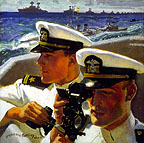ORIGINAL: inqistor
What is your theory behing bombers bombload modification?
I see in your test AARs, that bombers carry lots of small bombs on ground missions (and they seem to be named after their bombload configuration), and it seems to be sometimes overkill. That clearly indicates, that land devices are easily destroyed by smaller bombs, and it shows a good way, to modify 1E Attack Bombers, and FB to be better in close support role, than 4Es.
You are on target, to borrow a bomber metaphor (both my parents served in B-17s - my mother using cameras to train bombradiers and gunners),
my father being a tail gunner (don't ask me why that is a different job from some other kind of gunner - I don't know?).
But, first of all, understand my "changes" are in the direction of history. That is, I went over to smaller bombs WHEN AND IF that was the TYPICAL load of the plane, not for some game effect per se. So the Japanese get a lot more of this than the Allies do - although to be sure - the Allies do have bombers with small bombs - and eventually big bombers with lots of big bombs. Because of other technical problems, stock and most mods grossly understate typical Allied bomb loads - whereas I use the "normal bombload" and the "extended range bombload" (but usually not the maximum load bombload which is not modeled in code at all - except for the case of a plane where normal load = maximum load - rare for the Allies - but it does happen]. So my design intent was to get the data "right" - not to have a particular effect on targets.
Second, you are also right that my planes come in variants NAMED for the KIND of bomb they carry. AS = ASW load; HE = HE bombs; AP = AP or SAP bombs; TP = torpedo load vs ships or heavy bombs otherwise; ICB = cluster bombs - BW = biological bombs (Japan only) and so on. This is implemented to help players know without needing to look at the aircraft - just from the aircraft name. Some planes have four or more different loads.
Third, I noticed that light bombers OFTEN (not always) become better vs soft targets when you arm them as was. Thus - a Japanese light bomber with 15 kg bombs is superb in this, its intended role. But a fighter bomber with two 1000 pound bombs is not as effective, per ton of bombs, because it cannot carry a larger number of smaller bombs. At the same time, a Japanese bomber with 50 kg (110 pound) or an Allied bomber with 100 pound bombs (or even 25 kg and 50 pounders in a few cases) is better vs land units than against battleships. As should be the case - a direct hit will take out almost any normal device like a machine gun, mortar, artillery piece or vehicle. But battleships are armored and only big AP bombs will penetrate, although big HE bombs that detonate nearby are probably even worse, bursting seams under hydrostatic pressure - it still needs a big bomb to matter. The ship should slough off small hits - except if they score on a radar or deck AA gun (etc).
Fourth, this change - toward more and often smaller bombs - is in the context of yet another change: I do NOT use the design system in re effect of the bomb. Long ago, I went over to using square root of bomb weight instead of bomb weight - because for soft targets - the effect of a bomb is a function of the distance you are from it, by the inverse square law. While this did cure "nuclear bombardments" by BB and bombers with big bombs, it was too much. So I changed the constant (which is one if not defined) in front of the square root and now multiply by 2 or 4 (typically) for AP and HE - still well below effect = weight but big enough to matter. In COMBINATION this means the effect of more, smaller bombs is much greater than the same weight of fewer, larger bombs - re say LCU or unarmored ships. Again as it should be. But let me note once again - these changes were made to move in the direction of better modeling - not to achieve those effects for their own sake. Only if you believe this load is approprate to that plane should you use it. The game is a simplification of reality - so typical loads should be the thing we use IMHO.
Bottom line, light bombers with lots of little bombs are better for ground support than any bombers with a comparable weight of big bombers is.
On the other hand, a fighter bomber putting thousand pounders into an armored warship is going to work better than dropping 15, 25 or 50 kg bombs will.










